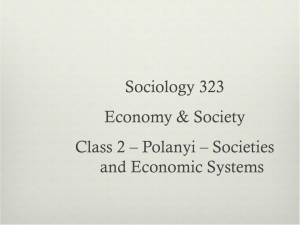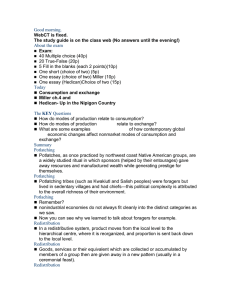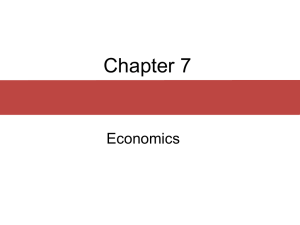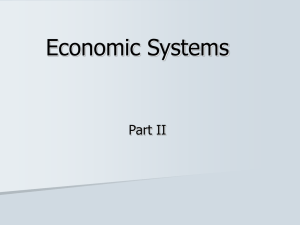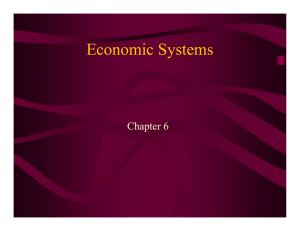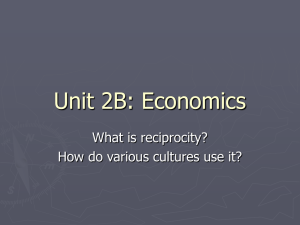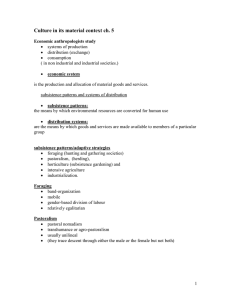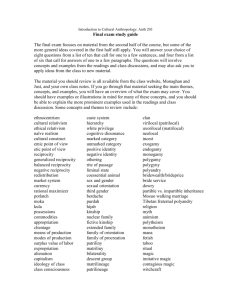Chapter 18, Economic Systems
advertisement
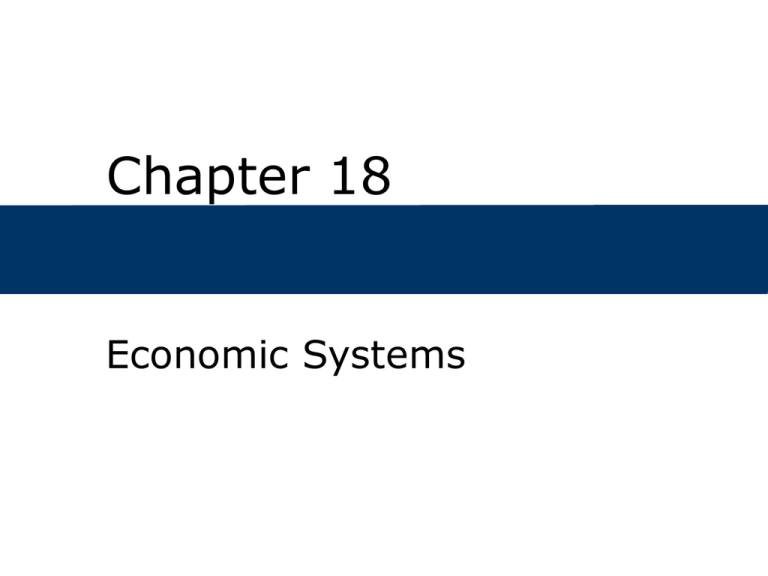
Chapter 18 Economic Systems Chapter Outline How Do anthropologists study economic systems? How do the economies of nonindustrial peoples work? How and why are goods exchanged? Resources Resources used to produce goods and services include: – Raw materials – Labor – Technology Ceremonial Trading in the Kula Ring Patterns of Labor Every society has a division of labor by gender and age. This is an elaboration of patterns found among monkeys and apes. Division by gender makes learning more efficient. Division by age provides sufficient time to developing skills. Three Patterns of Work by Gender Flexible/integrated pattern Rigid segregation pattern Dual sex pattern Flexible/Integrated Pattern 35% of tasks are performed equally by men and women. Tasks deemed appropriate for one gender may be performed by the other. Boys and girls grow up in much the same way and learn to value cooperation over competition. Rigid Segregation Pattern Almost all work is defined as masculine or feminine. Men and women rarely engage in joint efforts. Common in pastoral nomadic, intensive agricultural, and industrial societies. Both boys and girls are raised primarily by women. Dual Sex Configuration Men and women carry out their work separately. The relationship is one of balanced complementarity rather than inequality. Each gender manages its own affairs, and the interests of both men and women are represented at all levels. Modes of Distributing Goods Reciprocity 2. Redistribution 3. Market exchange 1. Reciprocity Generalized - The value of what is given is not calculated and repayment is not specified. Balanced -A direct obligation to reciprocate in equal value for the relationship to continue. Negative - The giver tries to get the better of the deal. Redistribution Form of exchange in which goods flow into a central place where they are sorted, counted, and reallocated. In societies with a sufficient surplus to support some sort of government, goods in the form of gifts, tribute, taxes, and the spoils of war are gathered into storehouses controlled by a chief or some other type of leader. From there, they are handed out again. Motives in Redistributing Income 1. 2. 3. The leadership has three motives in redistributing this income: Gain or maintain a position of superiority through a display of wealth and generosity. Assure those who support the leadership an adequate standard of living by providing them with desired goods. Establish alliances with leaders of other groups by hosting them at lavish parties and giving them valuable goods. Market Exchange Buying and selling of goods and services, with prices set by rules of supply and demand. Money may be defined as something used to make payments for other goods and services. Its critical attributes are durability, portability, divisibility, recognizability, and fungibility. The wide range of things that have been used as money in one or another society includes salt, shells, stones, beads, feathers, fur, bones, and teeth.
